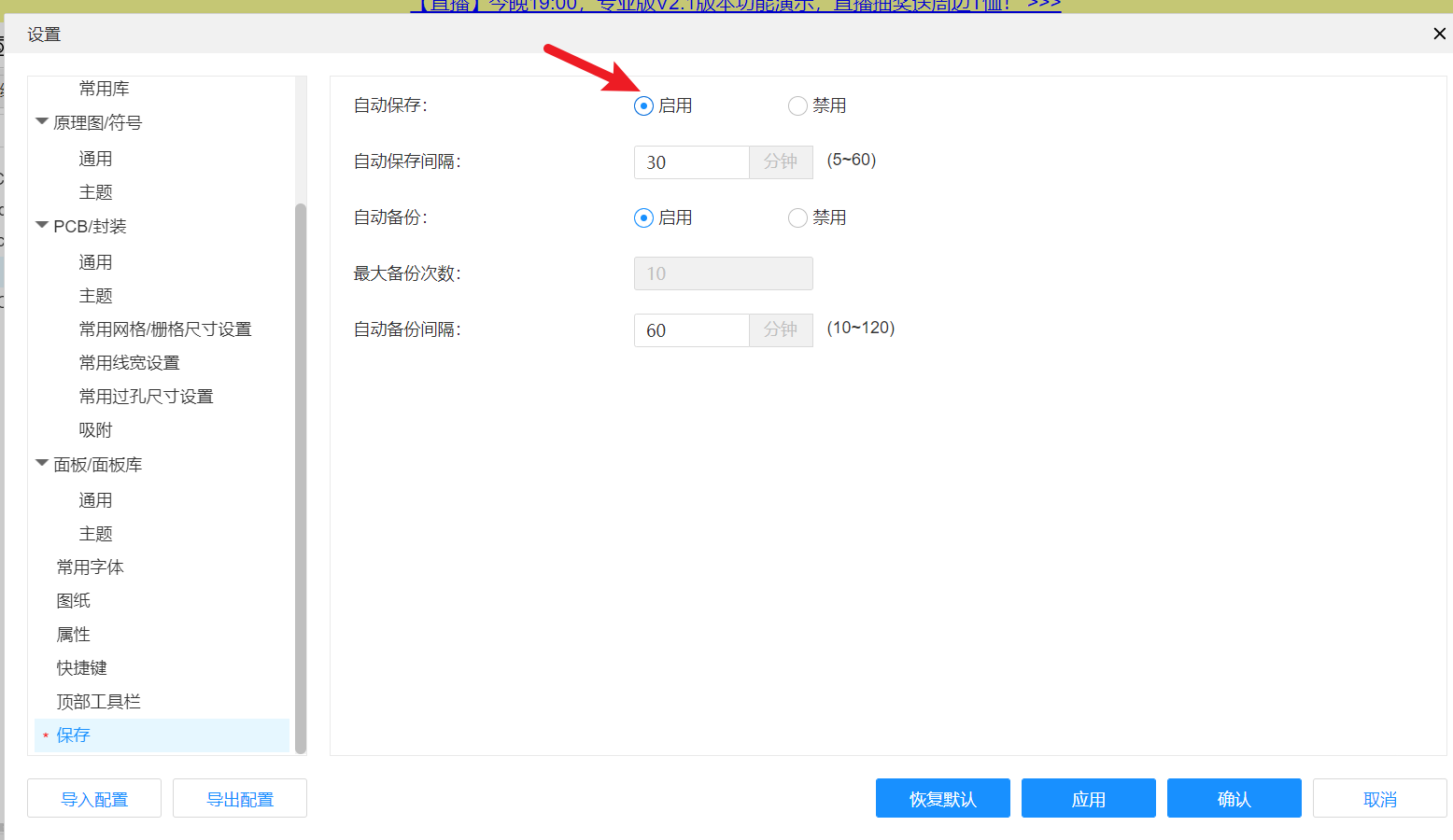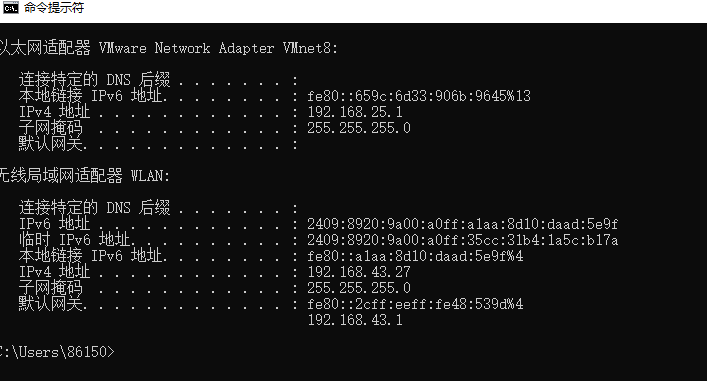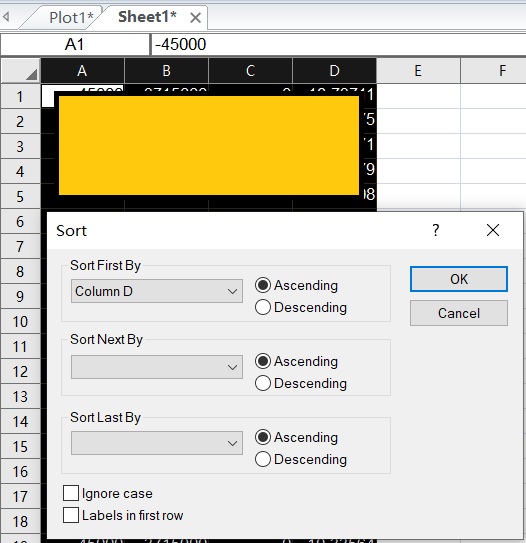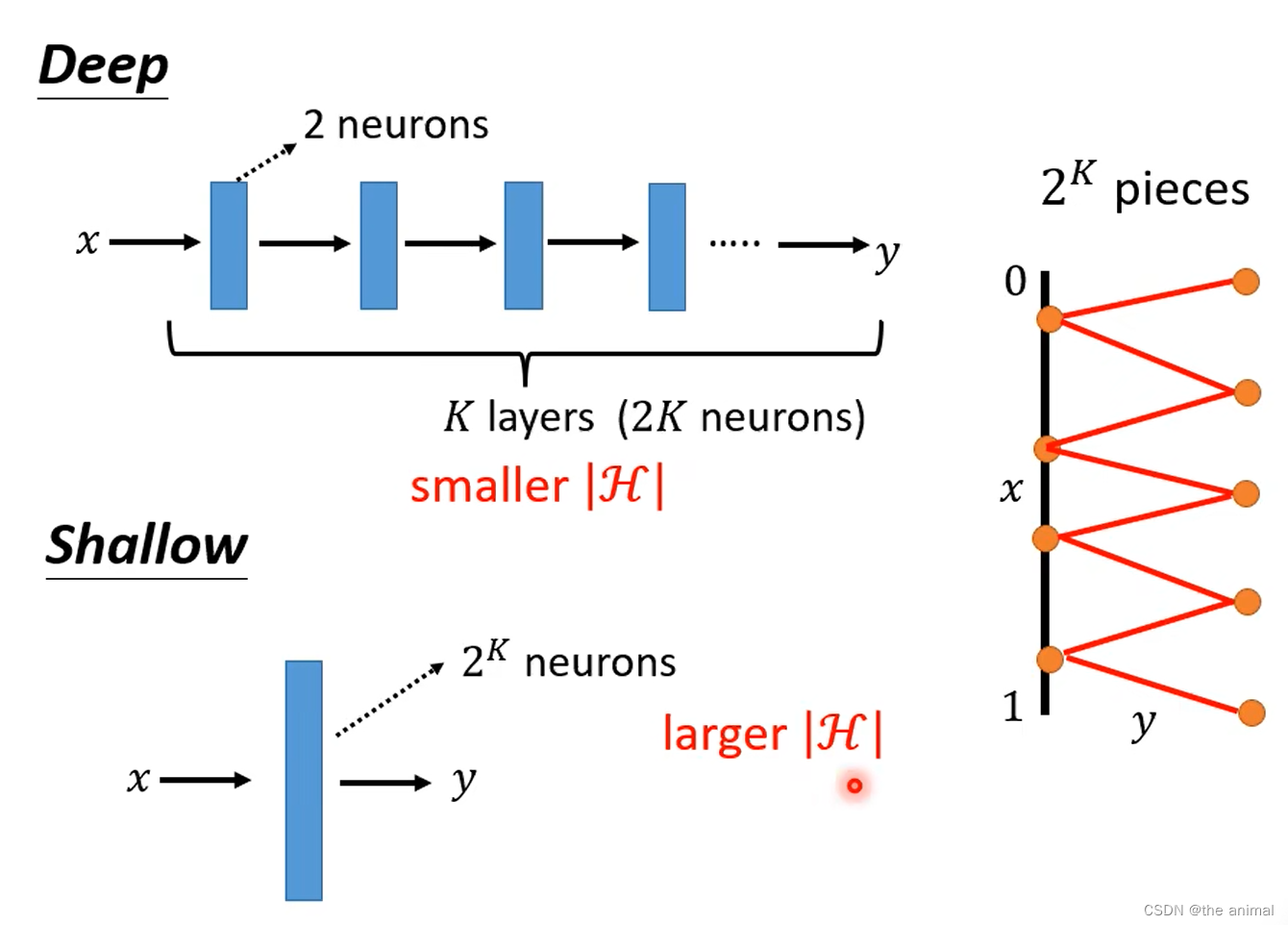多线程高频知识点—2023
- 多线程的基本概念
- 什么是线程/进程
- 为什么在进程中还需要线程呢?
- 同步与异步的区别
- 程序计数器
- 多线程的应用场景
- 多线程的创建方式
- 手写一个异步日志框架
- 多线程线程安全问题
多线程的基本概念
什么是cpu
CPU的中文名称是中央处理器,是进行逻辑运算用的,主要由运算器、控制器、寄存器三部分组成,从字面意思看就是运算就是起着运算的作用,控制器就是负责发出cpu每条指令所需要的信息,寄存器就是保存运算或者指令的一些临时文件,这样可以保证更高的速度。
也就是我们的线程运行在cpu之上。
什么是线程/进程
进程是资源分配最小单位,线程是程序执行的最小单位。 计算机在执行程序时,会为程序创建相应的进程,进行资源分配时,是以进程为单位进行相应的分配。每个进程都有相应的线程,在执行程序时,实际上是执行相应的一系列线程。
总结: 进程是资源分配最小单位,线程是程序执行的最小单位
什么是进程:
1.cpu从硬盘中读取一段程序到内存中,该执行程序的实例就叫做进程
2.一个程序如果被cpu多次被读取到内存中,则变成多个独立的进程
什么是线程:
线程是程序执行的最小单位,在一个进程中可以有多个不同的线程
同时执行。
为什么在进程中还需要线程呢?
同一个应用程序中(进程),更好并行处理。
为什么需要使用到多线程
采用多线程的形式执行代码,目的就是为了提高程序的效率。
目的就是为了提高程序开发的效率
比如:现在一个项目只有一个程序员开发,需要开发功能模块会员模块、支付模块、订单模块。
并行/串行区别
串行也就是单线程执行 代码执行效率非常低,代码从上向下执行;
并行就是多个线程并行一起执行,效率比较高。
同步与异步的区别
同步概念: 就是代码从上向下执行。
异步的概念: 单独分支执行 相互之间没有任何影响。
CPU调度时间片
1.单核的cpu上每次只能够执行一次线程,如果在单核的cpu上开启了多线程,则会发生对每个线程轮流执行 。
2.Cpu每次单个计算的时间成为一个cpu时间片,实际只有几十毫秒人为感觉好像是
在多线程。
3.对于线程来说,存在等待cpu调度的时候 该线程的状态是为就绪状态,如果被cpu调度则该线程的状态为运行状态
4.当cpu转让执行其他的线程时,则该线程有变为就绪状态。
如果在单核的cpu之上开启了多线程,底层执行并不是真正意义上的多线程。
利用多核多线程性能。
Cpu密集型/IO密集型
Cpu密集型:长时间占用cpu;例如: 视频剪辑
IO密集型 :cpu计算时间短 访问外接设备时间长
Input/output
CPU调度算法原理
1.先来先服务 缺点如果最先来执行的线程 是CPU密集型 这样话可能会一直,无法继续执行其他的线程。
2.最短作业法 谁的计算时间短,谁先来执行。
3.优先级调度算法 根据重要性将进程分成4个优先级
优先级4 进程D负责画面----
优先级3 进程B和进程C接受用户的指令 重要
优先级2 后台处理器 次要
优先级1
程序计数器
程序计数器是用于存放下一条指令所在单元的地址的地方
Cpu上下文切换
多线程的应用场景
多线程的快速入门
1.客户端(移动App端/)开发;
2.异步发送短信/发送邮件
3.将执行比较耗时的代码改用多线程异步执行; 可以提高接口的响应速度
4.异步写入日志 日志框架底层
5.多线程下载
多线程的创建方式
1)继承Thread类创建线程
2)实现Runnable接口创建线程
3)使用匿名内部类的形式创建线程
4)使用lambda表达式创建线程
5)使用Callable和Future创建线程
6)使用线程池例如用Executor框架
7)spring @Async异步注解 结合线程池
1)继承Thread类创建线程
public class ThreadDemo01 extends Thread {
@Override
public void run() {
System.out.println(Thread.currentThread().getName() + "<run>");
}
public static void main(String[] args) {
// 创建一个线程
ThreadDemo01 threadDemo01 = new ThreadDemo01();
// 启动线程是start方法而不是run方法
threadDemo01.start();
}
}
2)实现Runnable接口创建线程
public class ThreadDemo02 implements Runnable {
public void run() {
System.out.println(Thread.currentThread().getName() + ",我是子线程");
}
public static void main(String[] args) {
new Thread(new ThreadDemo02()).start();
}
}
3)使用匿名内部类的形式创建线程
// 1.使用匿名内部类创建线程
new Thread(new Runnable() {
public void run() {
System.out.println(Thread.currentThread().getName() + ",>我是子线程<");
}
}).start();
4)使用jdk8的新特性lambda 创建线程
lambda表达式创建线程

new Thread(()->{
System.out.println(Thread.currentThread().getName() + ",>我是子线程<");
}).start();
5)使用Callable和Future创建线程
Callable和Future 线程可以获取到返回结果 底层基于LockSupport
线程 异步执行 比较耗时间-
从Java 5开始,Java提供了Callable接口,该接口是Runnable接口的增强版,Callable接口提供了一个call()方法,可以看作是线程的执行体,但call()方法比run()方法更强大。
call()方法可以有返回值。
call()方法可以声明抛出异常。
public class ThreadCallable implements Callable<Integer> {
public static void main(String[] args) throws ExecutionException, InterruptedException {
ThreadCallable threadCallable = new ThreadCallable();
FutureTask<Integer> integerFutureTask = new FutureTask<>(threadCallable);
new Thread(integerFutureTask).start();
Integer result = integerFutureTask.get();
System.out.println(result);
}
@Override
public Integer call() throws Exception {
// 默认代码执行非常耗时!!
System.out.println(Thread.currentThread().getName() + ",执行计算操作");
Thread.sleep(3000);
return 1;
}
}
6)使用线程池例如用Executors框架
复用机制
ExecutorService executorService = Executors.newCachedThreadPool();
executorService.execute(new Runnable() {
@Override
public void run() {
System.out.println(Thread.currentThread().getName() + “>我是子线程<”);
}
});
7)spring @Async异步注解
@Async 底层基于aop+自定义注解实现
@Component
@Slf4j
public class OrderManage {
@Async
public void asyncLog() {
try {
Thread.sleep(3000);
log.info("<2>");
} catch (Exception e) {
}
}
}
/**
* http://127.0.0.1:8080/addOrder
*
* @return
*/
@RequestMapping("/addOrder")
public String addOrder() {
log.info("<1>");
orderManage.asyncLog();
log.info("<3>");
return "3";
}
手写 @Async异步注解
1.aop 拦截只要在我们的方法上有使用到@MayiktAsync 就单独的开启一个异步线程
执行我们的目标方法。
Aop
http请求
环绕通知开始
目标方法
环绕通知结束
@Aspect
@Component
public class ExtMayiktThreadAop {
@Around(value = "@annotation(com.mayikt.service.annotation.MayiktAsync)")
public void around(ProceedingJoinPoint joinPoint) {
try {
// 正常需要结合到线程池
new Thread(() -> {
try {
joinPoint.proceed();
} catch (Throwable throwable) {
throwable.printStackTrace();
}
}, "mayikt线程").start();
} catch (Throwable throwable) {
}
}
}
@Target(ElementType.METHOD)
@Retention(RetentionPolicy.RUNTIME)
public @interface MayiktAsync {
}
@Component
@Slf4j
public class OrderManage {
@MayiktAsync
public void asyncLog() {
try {
Thread.sleep(3000);
log.info("<2>");
} catch (Exception e) {
}
}
}
手写一个异步日志框架
常用日志框架: Log4j,Log4j 2,Logback
日志框架:ALL < TRACE < DEBUG < INFO < WARN < ERROR < FATAL < OFF
aop采集日志
@Aspect
@Component
@Slf4j
public class AopLog {
private static final String START_TIME = "request-start";
private SimpleDateFormat sdf4 = new SimpleDateFormat("yyyy年MM月dd日HH时mm分ss秒");
/**
* 切入点
*/
@Pointcut("execution(public * com.mayikt.service.*Service.*(..))")
public void log() {
}
/**
* 前置操作
*
* @param point 切入点
*/
@Before("log()")
public void beforeLog(JoinPoint point) {
ServletRequestAttributes attributes = (ServletRequestAttributes) RequestContextHolder.getRequestAttributes();
HttpServletRequest request = Objects.requireNonNull(attributes).getRequest();
LogManage.addLog("【请求 时间】:" + sdf4.format(new Date()));
LogManage.addLog("【请求 URL】:" + request.getRequestURL());
LogManage.addLog("【请求 IP】:" + request.getRemoteAddr());
LogManage.addLog("【类名 Class】:" + point.getSignature().getDeclaringTypeName());
LogManage.addLog("【方法名 Method】:" + point.getSignature().getName());
LogManage.addLog("【请求参数 Args】:" +
JSON.toJSONString(point.getArgs())
);
// log.info("【请求 时间】:{}", System.currentTimeMillis());
// log.info("【请求 URL】:{}", request.getRequestURL());
// log.info("【请求 IP】:{}", request.getRemoteAddr());
// log.info("【类名 Class】:{},【方法名 Method】:{}", point.getSignature().getDeclaringTypeName(), point.getSignature().getName());
// log.info("【请求参数 Args】:{},", point.getArgs());
}
}
@Component
public class LogManage {
private static BlockingDeque<String> blockingDeque = new LinkedBlockingDeque<>();
private static final String filePath = "d:/log/mayikt.log";
public LogManage() {
new LogThread().start();
}
public static void addLog(String msg) {
blockingDeque.add(msg);
}
class LogThread extends Thread {
@Override
public void run() {
while (true) {
String log = blockingDeque.poll();
if (!StringUtils.isEmpty(log)) {
// 将该log写入到磁盘中
FileUtils.writeText(filePath, log, true);
}
}
}
}
}
public class FileUtils {
/*判断文件是否存在*/
public static boolean isExists(String filePath) {
File file = new File(filePath);
return file.exists();
}
/*判断是否是文件夹*/
public static boolean isDir(String path) {
File file = new File(path);
if (file.exists()) {
return file.isDirectory();
} else {
return false;
}
}
/**
* 文件或者目录重命名
*
* @param oldFilePath 旧文件路径
* @param newName 新的文件名,可以是单个文件名和绝对路径
* @return
*/
public static boolean renameTo(String oldFilePath, String newName) {
try {
File oldFile = new File(oldFilePath);
//若文件存在
if (oldFile.exists()) {
//判断是全路径还是文件名
if (newName.indexOf("/") < 0 && newName.indexOf("\\") < 0) {
//单文件名,判断是windows还是Linux系统
String absolutePath = oldFile.getAbsolutePath();
if (newName.indexOf("/") > 0) {
//Linux系统
newName = absolutePath.substring(0, absolutePath.lastIndexOf("/") + 1) + newName;
} else {
newName = absolutePath.substring(0, absolutePath.lastIndexOf("\\") + 1) + newName;
}
}
File file = new File(newName);
//判断重命名后的文件是否存在
if (file.exists()) {
System.out.println("该文件已存在,不能重命名");
} else {
//不存在,重命名
return oldFile.renameTo(file);
}
} else {
System.out.println("原该文件不存在,不能重命名");
}
} catch (Exception e) {
e.printStackTrace();
}
return false;
}
/*文件拷贝操作*/
public static void copy(String sourceFile, String targetFile) {
File source = new File(sourceFile);
File target = new File(targetFile);
target.getParentFile().mkdirs();
FileInputStream fis = null;
FileOutputStream fos = null;
FileChannel in = null;
FileChannel out = null;
try {
fis = new FileInputStream(source);
fos = new FileOutputStream(target);
in = fis.getChannel();//得到对应的文件通道
out = fos.getChannel();//得到对应的文件通道
in.transferTo(0, in.size(), out);//连接两个通道,并且从in通道读取,然后写入out通道
} catch (IOException e) {
e.printStackTrace();
} finally {
try {
if (out != null) {
out.close();
}
if (in != null) {
in.close();
}
if (fos != null) {
fos.close();
}
if (fis != null) {
fis.close();
}
} catch (IOException e) {
e.printStackTrace();
}
}
}
/*读取Text文件操作*/
public static String readText(String filePath) {
String lines = "";
try {
FileReader fileReader = new FileReader(filePath);
BufferedReader bufferedReader = new BufferedReader(fileReader);
String line = null;
while ((line = bufferedReader.readLine()) != null) {
lines += line + "\n";
}
} catch (Exception e) {
e.printStackTrace();
}
return lines;
}
/*写入Text文件操作*/
public static void writeText(String filePath, String content, boolean isAppend) {
FileOutputStream outputStream = null;
OutputStreamWriter outputStreamWriter = null;
BufferedWriter bufferedWriter = null;
try {
outputStream = new FileOutputStream(filePath, isAppend);
outputStreamWriter = new OutputStreamWriter(outputStream);
bufferedWriter = new BufferedWriter(outputStreamWriter);
bufferedWriter.write(content);
bufferedWriter.newLine();
} catch (IOException e) {
e.printStackTrace();
} finally {
try {
if (bufferedWriter != null) {
bufferedWriter.close();
}
if (outputStreamWriter != null) {
outputStreamWriter.close();
}
if (outputStream != null) {
outputStream.close();
}
} catch (Exception e) {
e.printStackTrace();
}
}
}
}
多线程线程安全问题
什么是线程安全问题
多线程同时对同一个全局变量做写的操作,可能会受到其他
线程的干扰,就会发生线程安全性问题。
全局变量----java内存结构
什么是写操作------修改
当多个线程共享同一个全局变量,做写的操作时,可能会受到其他的线程干扰,发生线程
安全问题。
public class ThreadCount implements Runnable {
private static Integer count = 100;
@Override
public void run() {
while (count > 1) {
cal();
}
}
private void cal() {
try {
Thread.sleep(20);
} catch (Exception e) {
}
count--;
System.out.println(Thread.currentThread().getName() + "," + count);
}
public static void main(String[] args) {
ThreadCount threadCount = new ThreadCount();
Thread thread1 = new Thread(threadCount);
Thread thread2 = new Thread(threadCount);
thread1.start();
thread2.start();
}
}
同时执行概念
1-3 多线程如何解决线程安全问题/ 多线程如何实现同步呢
如何解决线程安全的问题
核心思想:上锁 分布式锁
在同一个jvm中,多个线程需要竞争锁的资源,最终只能够有一个线程
能够获取到锁,多个线程同时抢同一把锁,谁(线程)能够获取到锁,
谁就可以执行到该代码,如果没有获取锁成功 中间需要经历锁的升级过程
如果一致没有获取到锁则会一直阻塞等待。
如果线程A获取锁成功 但是线程A一直不释放锁
线程B一直获取不到锁,则会一直阻塞等待。
代码从那一块需要上锁?-----可能会发生线程安全性问题的代码需要上锁。
Juc并发编程 锁 重入锁 悲观锁 乐观锁 公平锁 非公平锁
线程0 线程1 同时获取 this锁,假设线程0 获取到this ,意味着线程1没有获取到锁
则会阻塞等待。等我们线程0 执行完count-- 释放锁之后 就会唤醒 线程1从新进入
到获取锁的资源。
获取锁与释放锁 全部都是有底层虚拟机实现好了。
对一块代码加锁缺点:
可能会影响到程序的执行效率。
如果是同一把锁 在多线程的情况下 最终只能够给一个线程使用。
如果有线程持有了该锁 意味着其他的线程 不能够在继续获取锁
核心思想:当多个线程共享同一个全局变量时,将可能会发生线程安全的代码
上锁,保证只有拿到锁的线程才可以执行,没有拿到锁的线程不可以执行,需要阻塞等待。
1.使用synchronized锁,JDK1.6开始 锁的升级过程 juc 18-25
2.使用Lock锁 ,需要自己实现锁的升级过程。底层是基于aqs实现
3.使用Threadlocal,需要注意内存泄漏的问题。
4.原子类 CAS 非阻塞式
synchronized锁的基本用法
在多线程的情况下 需要是同一个对象锁
Synchronized(对象锁)
{
需要保证线程安全的代码
}
1.修饰代码块,指定加锁对象,对给定对象加锁,进入同步代码快前要获得 给定对象 的锁。
2.修饰实例方法,作用于当前实例加锁,进入同步代码前要获得 当前实例 的锁
3.修饰静态方法,作用于当前类对象(当前类.class)加锁,进入同步代码前要获得 当前类对象 的锁
修饰代码块
修饰代码块,指定加锁对象,对给定对象加锁,进入同步代码库前要获得 给定对象 的锁。
public class ThreadCount implements Runnable {
private static Integer count = 100;
private String lock = “lock”;
@Override
public void run() {
while (count > 1) {
cal();
}
}
private void cal() {
synchronized (this) {
try {
Thread.sleep(10);
} catch (Exception e) {
}
count--;
System.out.println(Thread.currentThread().getName() + "," + count);
}
}
public static void main(String[] args) {
ThreadCount threadCount = new ThreadCount();
Thread thread1 = new Thread(threadCount);
Thread thread2 = new Thread(threadCount);
thread1.start();
thread2.start();
}
}
修饰实例方法
修饰实例方法,作用于当前实例加锁,进入同步代码前要获得 当前实例的锁
在实例方法上默认加上synchronized 默认使用this锁。
public class ThreadCount implements Runnable {
private static Integer count = 100;
private String lock = “lock”;
@Override
public void run() {
while (count > 1) {
cal();
}
}
private synchronized void cal() {
try {
Thread.sleep(10);
} catch (Exception e) {
}
count--;
System.out.println(Thread.currentThread().getName() + "," + count);
}
public static void main(String[] args) {
ThreadCount threadCount = new ThreadCount();
Thread thread1 = new Thread(threadCount);
Thread thread2 = new Thread(threadCount);
thread1.start();
thread2.start();
}
}
修饰静态方法
修饰静态方法,作用于当前类对象加锁,进入同步代码前要获得 当前类对象的锁
默认使用当前类的类名.class 锁
public class ThreadCount implements Runnable {
private static Integer count = 100;
private static String lock = “lock”;
@Override
public void run() {
while (count > 1) {
cal();
}
}
private static void cal() {
synchronized (ThreadCount.class) {
try {
Thread.sleep(10);
} catch (Exception e) {
}
count--;
System.out.println(Thread.currentThread().getName() + "," + count);
}
}
public static void main(String[] args) {
ThreadCount threadCount1 = new ThreadCount();
ThreadCount threadCount2 = new ThreadCount();
Thread thread1 = new Thread(threadCount1);
Thread thread2 = new Thread(threadCount2);
thread1.start();
thread2.start();
}
}
synchronized死锁问题
我们如果在使用synchronized 需要注意 synchronized锁嵌套的问题 避免死锁的问题发生。
案例:
public class DeadlockThread implements Runnable {
private int count = 1;
private String lock = “lock”;
@Override
public void run() {
while (true) {
count++;
if (count % 2 == 0) {
// 线程1需要获取 lock 在获取 a方法this锁
// 线程2需要获取this 锁在 获取B方法lock锁
synchronized (lock) {
a();
}
} else {
synchronized (this) {
b();
}
}
}
}
public synchronized void a() {
System.out.println(Thread.currentThread().getName() + ",a方法...");
}
public void b() {
synchronized (lock) {
System.out.println(Thread.currentThread().getName() + ",b方法...");
}
}
public static void main(String[] args) {
DeadlockThread deadlockThread = new DeadlockThread();
Thread thread1 = new Thread(deadlockThread);
Thread thread2 = new Thread(deadlockThread);
thread1.start();
thread2.start();
}
}
synchronized 死锁诊断工具
D:\path\jdk\jdk8\bin\jconsole.exe
线程1 先获取到自定义对象的lock锁,进入到a方法需要获取this锁
线程2 先获取this锁, 进入到b方法需要自定义对象的lock锁
线程1 线程2 是在同时执行
线程1 线程2
先获取到自定义对象的lock锁 先获取this锁
需要线程2已经持有的this锁 线程1已经持有自定义对象的lock锁
springmvc 接口中使用
需要注意:
Spring MVC Controller默认是单例的 需要注意线程安全问题
单例的原因有二:
1、为了性能。
2、不需要多例。
@Scope(value = “prototype”) 设置为多例子。
@RestController
@Slf4j
//@Scope(value = “prototype”)
public class CountService {
private int count = 0;
@RequestMapping("/count")
public synchronized String count() {
try {
log.info(">count<" + count++);
try {
Thread.sleep(3000);
} catch (Exception e) {
}
} catch (Exception e) {
}
return "count";
}
}
临界区
当多个线程读共享资源 读的过程中,没有任何问题,
在多个线程对共享资源读写操作时发生指令交错,就会发生线程安全问题
在多线程中如果存在对共享资源读写操作,该代码称作为临界区。
public class Thread08 extends Thread {
int count = 0;
@Override
public void run() {
// 该代码就是为临界区
count++ ;
}
}
竞争条件
多个线程在临界区内执行,由于代码的执行序列不同(指令)而导致结果无法预测,称之为发生了竞态条件
解决办法:
synchronized,Lock、原子类
字节码角度分析线程安全问题
线程安全问题:
1.字节码
2.上下文切换
3.Jmm java内存模型
Java源代码 →编译成class文件
线程安全代码
public class Thread02 extends Thread {
private static int sum = 0;
@Override
public void run() {
sum();
}
public void sum() {
for (int i = 0; i < 10000; i++) {
sum++;
}
}
public static void main(String[] args) throws InterruptedException {
Thread02 t1 = new Thread02();
Thread02 t2 = new Thread02();
t1.start();
t2.start();
t1.join();
t2.join();
System.out.println(sum);
}
}
字节码文件分析
javap -p -v Thread01.class
sum++
Getstatic ### 获取静态变量值sum
iconst_1 ## 准备一个常量1
Iadd ### 自增
Putstatic ### 将修改后的值存入静态变量sum
Cpu上下文角度分析线程安全问题
分析:
共享变量值 sum=0
假设现在cpu执行到t1线程,t1线程执行到13行 就切换到另外t2线程执行,
t2线程将静态变量sum=0改成=sum=1 有切换回来执行t1线程 t1线程 使用之前获取
Sum=0 +1 赋值给共享变量sum ,则最终结果:sum=1.
但是现在sum++ 执行 最终结果是算了一次。
多线程线程之间通讯
等待/通知机制
等待/通知的相关方法是任意Java对象都具备的,因为这些方法被定义在所有对象的超类java.lang.Object上,方法如下:
1.notify() :通知一个在对象上等待的线程,使其从main()方法返回,而返回的前提是该线程获取到了对象的锁
2.notifyAll():通知所有等待在该对象的线程
3.wait():调用该方法的线程进入WAITING状态,只有等待其他线程的通知或者被中断,才会返回。需要注意调用wait()方法后,会释放对象的锁 。
Exception in thread “Thread-0” java.lang.IllegalMonitorStateException
at java.lang.Object.wait(Native Method)
at java.lang.Object.wait(Object.java:502)
at com.mayikt.thread.days02.Thread03.run(Thread03.java:16)
注意:wait,notify和notifyAll要与synchronized一起使用
wait/notify/notifyAll在Object类中
因为我们在使用synchronized锁 对象锁可以是任意对象,所以wait/notify/notifyAll需要放在Object类中。
wait/notify/简单的用法
public class Thread03 extends Thread {
@Override
public void run() {
try {
synchronized (this) {
System.out.println(Thread.currentThread().getName() + “>>当前线程阻塞,同时释放锁!<<”);
this.wait();
}
System.out.println(“>>run()<<”);
} catch (InterruptedException e) {
}
}
public static void main(String[] args) {
Thread03 thread = new Thread03();
thread.start();
try {
Thread.sleep(3000);
} catch (Exception e) {
}
synchronized (thread) {
// 唤醒正在阻塞的线程
thread.notify();
}
}
}
多线程通讯实现生产者与消费者
public class Thread04 {
class Res {
/**
* 姓名
/
private String userName;
/*
* 性别
/
private char sex;
/*
* 标记
*/
private boolean flag = false;
}
class InputThread extends Thread {
private Res res;
public InputThread(Res res) {
this.res = res;
}
@Override
public void run() {
int count = 0;
while (true) {
synchronized (res) {
//flag = false 写入输入 flag = true 则不能写入数据 只能读取数据
try {
// 如果flag = true 则不能写入数据 只能读取数据 同时释放锁!
if (res.flag) {
res.wait();
}
} catch (Exception e) {
}
if (count == 0) {
this.res.userName = "余胜军";
this.res.sex = '男';
} else {
this.res.userName = "小薇";
this.res.sex = '女';
}
res.flag = true;
res.notify();
}
count = (count + 1) % 2;
}
}
}
class OutThread extends Thread {
private Res res;
public OutThread(Res res) {
this.res = res;
}
@Override
public void run() {
while (true) {
synchronized (res) {
try {
if (!res.flag) {
res.wait();
}
} catch (Exception e) {
}
System.out.println(res.userName + "," + res.sex);
res.flag = false;
res.notify();
}
}
}
}
public static void main(String[] args) {
new Thread04().print();
}
public void print() {
Res res = new Res();
InputThread inputThread = new InputThread(res);
OutThread outThread = new OutThread(res);
inputThread.start();
outThread.start();
}
}
/**
- flag 默认值==false
- flag false 输入线程 输入值 输出线程 先拿到锁 释放锁
- flag true 输出线程 输出值
*/
public boolean flag = false;
Join/Wait与sleep之间的区别
sleep(long)方法在睡眠时不释放对象锁
join(long)方法先执行另外的一个线程,在等待的过程中释放对象锁 底层是基于wait封装的,
Wait(long)方法在等待的过程中释放对象锁
三个线程 T1,T2,T3,怎么确保它们按顺序执行?
Thread t1 = new Thread(() -> System.out.println(Thread.currentThread().getName() + “,线程执行”), “t1”);
Thread t2 = new Thread(() -> System.out.println(Thread.currentThread().getName() + “,线程执行”), “t2”);
Thread t3 = new Thread(() -> System.out.println(Thread.currentThread().getName() + “,线程执行”), “t3”);
t1.start();
t2.start();
t3.start();
public class Thread05 {
public static void main(String[] args) throws InterruptedException {
Thread t1 = new Thread(() -> {
try {
Thread.sleep(3000);
} catch (Exception e) {
}
System.out.println(Thread.currentThread().getName() + ",线程执行");
}, "t1");
Thread t2 = new Thread(() -> {
try {
t1.join();
} catch (InterruptedException e) {
}
System.out.println(Thread.currentThread().getName() + ",线程执行");
}, "t2");
Thread t3 = new Thread(() -> {
try {
t2.join();
} catch (InterruptedException e) {
}
System.out.println(Thread.currentThread().getName() + ",线程执行");
}, "t3");
t1.start();
t2.start();
t3.start();
}
}
Join的底层原理如何实现
public class Thread06 {
private Object object = new Object();
public static void main(String[] args) throws InterruptedException {
Thread06 thread06 = new Thread06();
Thread thread = thread06.print();
thread.start();
try {
Thread.sleep(3000);
thread.interrupt();
} catch (Exception e) {
}
}
public Thread print() {
Thread thread = new Thread(() -> {
synchronized (object) {
System.out.println("1");
try {
object.wait(0);
} catch (InterruptedException e) {
e.printStackTrace();
}
System.out.println("2");
}
});
return thread;
}
}
Join底层原理是基于wait封装的,唤醒的代码在jvm Hotspot 源码中 当
jvm在关闭线程之前会检测线阻塞在t1线程对象上的线程,然后执行notfyAll(),这样t2就被唤醒了。
多线程知识高级部分
多线程七种执行的状态
初始化状态
就绪状态
运行状态
死亡状态
阻塞状态
超时等待
等待状态
start():调用start()方法会使得该线程开始执行,正确启动线程的方式。
wait():调用wait()方法,进入等待状态,释放资源,让出CPU。需要在同步快中调用。
sleep():调用sleep()方法,进入超时等待,不释放资源,让出CPU
stop():调用sleep()方法,线程停止,线程不安全,不释放锁导致死锁,过时。
join():调用sleep()方法,线程是同步,它可以使得线程之间的并行执行变为串行执行。
yield():暂停当前正在执行的线程对象,并执行其他线程,让出CPU资源可能立刻获得资源执行。
yield()的目的是让相同优先级的线程之间能适当的轮转执行
notify():在锁池随机唤醒一个线程。需要在同步快中调用。
nnotifyAll():唤醒锁池里所有的线程。需要在同步快中调用。
Sleep 主动释放cpu执行权 休眠一段时间
运行状态→限时等待状态
限时等待状态→就绪状态→运行状态
Synchronized 没有获取到锁 当前线程变为阻塞状态
如果有线程释放了锁,唤醒正在阻塞没有获取到锁的线程
从新进入到获取锁的状态
wait() 运行—等待状态
notify() 等待状态–阻塞状态(没有获取到锁的线程 队列)
—就绪状态→运行状态
守护线程与用户线程
java中线程分为两种类型:用户线程和守护线程。通过Thread.setDaemon(false)设置为用户线程;通过Thread.setDaemon(true)设置为守护线程。如果不设置次属性,默认为用户线程。
1.守护线程是依赖于用户线程,用户线程退出了,守护线程也就会退出,典型的守护线程如垃圾回收线程。
2.用户线程是独立存在的,不会因为其他用户线程退出而退出。
public class Thread01 {
public static void main(String[] args) {
Thread thread = new Thread(() -> {
while (true) {
try {
Thread.sleep(1000);
System.out.println(Thread.currentThread().getName() + “,我是子线程”);
} catch (Exception e) {
}
}
});
/**
* 1.setDaemon 设置为true 守护线程是依赖于用户线程,用户线程退出了,守护线程也就会退出,典型的守护线程如垃圾回收线程。
* 2.setDaemon 设置为false 用户线程是独立存在的,不会因为其他用户线程退出而退出。
*/
thread.setDaemon(true);
thread.start();
System.out.println("我是主线程,代码执行结束");
}
}
多线程yield
主动释放cpu执行权
1.多线程yield 会让线程从运行状态进入到就绪状态,让后调度执行其他线程。
2.具体的实现依赖于底层操作系统的任务调度器
public Thread02(String name) {
super(name);
}
@Override
public void run() {
for (int i = 0; i < 50; i++) {
if (i == 30) {
System.out.println(Thread.currentThread().getName() + “,释放cpu执行权”);
this.yield();
}
System.out.println(Thread.currentThread().getName() + “,” + i);
}
}
public static void main(String[] args) {
new Thread02(“mayikt01”).start();
new Thread02(“mayikt02”).start();
}
多线程优先级
1.在java语言中,每个线程都有一个优先级,当线程调控器有机会选择新的线程时,线程的优先级越高越有可能先被选择执行,线程的优先级可以设置1-10,数字越大代表优先级越高
注意:Oracle为Linux提供的java虚拟机中,线程的优先级将被忽略,即所有线程具有相同的优先级。
所以,不要过度依赖优先级。
2.线程的优先级用数字来表示,默认范围是1到10,即Thread.MIN_PRIORITY到Thread.MAX_PRIORTY.一个线程的默认优先级是5,即Thread.NORM_PRIORTY
3.如果cpu非常繁忙时,优先级越高的线程获得更多的时间片,但是cpu空闲时,设置优先级几乎没有任何作用。
public class Thread03 {
public static void main(String[] args) {
Thread t1 = new Thread(() -> {
int count = 0;
for (; ; ) {
System.out.println(Thread.currentThread().getName() + “,” + count++);
}
}, “t1线程:”);
Thread t2 = new Thread(() -> {
int count = 0;
for (; ; ) {
System.out.println(Thread.currentThread().getName() + “,” + count++);
}
}, “t2线程:”);
t1.setPriority(Thread.MIN_PRIORITY);
t1.setPriority(Thread.MAX_PRIORITY);
t1.start();
t2.start();
}
}
sleep防止CPU占用100%
sleep(long millis) 线程睡眠 millis 毫秒
sleep(long millis, int nanos) 线程睡眠 millis 毫秒 + nanos 纳秒
使用sleep方法避免cpu空转 防止cpu占用100%
public static void main(String[] args) {
new Thread(() -> {
while (true) {
try {
Thread.sleep(30);
} catch (InterruptedException e) {
e.printStackTrace();
}
}
}).start();
}
如何安全的停止一个线程
调用stop方法
Stop:中止线程,并且清除监控器锁的信息,但是可能导致 线程安全问题,JDK不建议用。 Destroy: JDK未实现该方法。
Interrupt(线程中止)
Interrupt 打断正在运行或者正在阻塞的线程。
1.如果目标线程在调用Object class的wait()、wait(long)或wait(long, int)方法、join()、join(long, int)或sleep(long, int)方法时被阻塞,那么Interrupt会生效,该线程的中断状态将被清除,抛出InterruptedException异常。
2.如果目标线程是被I/O或者NIO中的Channel所阻塞,同样,I/O操作会被中断或者返回特殊异常值。达到终止线程的目的。
如果以上条件都不满足,则会设置此线程的中断状态。
打断正在阻塞的线程
public static void main(String[] args) {
Thread t1 = new Thread(() -> {
try {
Thread.sleep(5000);
} catch (Exception e) {
e.printStackTrace();
}
}, “t1”);
t1.start();
try {
Thread.sleep(1000);
} catch (Exception e) {
}
System.out.println("打断子线程");
//调用interrupt 打断正在阻塞的线程
t1.interrupt();
System.out.println("获取打断标记:" + t1.isInterrupted());
}
打断正在运行的线程
public class Thread06 extends Thread {
@Override
public void run() {
while (true) {
// 如果终止了线程,则停止当前线程
if (this.isInterrupted()) {
break;
}
}
}
public static void main(String[] args) {
Thread06 thread06 = new Thread06();
thread06.start();
try {
Thread.sleep(1000);
} catch (Exception e) {
}
thread06.interrupt();
}
}
正确的线程中止-标志位
在上方代码逻辑中,增加一个判断,用来控制线程执行的中止。
public class Thread07 extends Thread {
private volatile boolean isFlag = true;
@Override
public void run() {
while (isFlag) {
}
}
public static void main(String[] args) {
Thread07 thread07 = new Thread07();
thread07.start();
// thread07.isFlag = false;
}
}
Lock锁的基本使用
在jdk1.5后新增的ReentrantLock类同样可达到此效果,且在使用上比synchronized更加灵活
相关API:
使用ReentrantLock实现同步
lock()方法:上锁
unlock()方法:释放锁
使用Condition实现等待/通知 类似于 wait()和notify()及notifyAll()
Lock锁底层基于AQS实现,需要自己封装实现自旋锁。
Synchronized —属于JDK 关键字 底层属于 C++虚拟机底层实现
Lock锁底层基于AQS实现-- 变为重量级
Synchronized 底层原理—锁的升级过程
Lock 过程中 注意 获取锁 释放锁
ReentrantLock用法
import java.util.concurrent.TimeUnit;
import java.util.concurrent.locks.Lock;
import java.util.concurrent.locks.ReentrantLock;
/**
-
@author 余胜军
-
@ClassName Thread09
-
@qq 644064779
-
@addres www.mayikt.com
-
微信:yushengjun644
*/
public class Thread09 implements Runnable {
private int count = 100;
private Lock lock = new ReentrantLock();@Override
public void run() {
while (true) {
try {
Thread.sleep(30);
} catch (Exception e) {} try { // 获取锁 lock.lock(); if (count > 1) { count--; System.out.println(Thread.currentThread().getName() + "," + count); } } catch (Exception e) { e.printStackTrace(); } finally { // 释放锁 lock.unlock(); } }}
public static void main(String[] args) {
Thread09 thread09 = new Thread09();
Thread t1 = new Thread(thread09);
Thread t2 = new Thread(thread09);
t1.start();
t2.start();
}
}
Condition用法
public class Thread10 {
private ReentrantLock lock = new ReentrantLock();
private Condition condition = lock.newCondition();
public static void main(String[] args) {
Thread10 thread10 = new Thread10();
try {
thread10.print();
Thread.sleep(3000);
thread10.signal();
} catch (Exception e) {
}
}
public void print() {
new Thread(() -> {
try {
// 释放锁 同时当前线程阻塞
lock.lock();
System.out.println(Thread.currentThread().getName() + ",1");
condition.await();
System.out.println(Thread.currentThread().getName() + ",2");
} catch (Exception e) {
e.printStackTrace();
} finally {
lock.unlock();
}
}).start();
}
public void signal() {
try {
lock.lock();
condition.signal();
} catch (Exception e) {
e.printStackTrace();
} finally {
lock.unlock();
}
}
}
多线程综合小案例
手写Callable与FutureTask模式
可以基于Callable+FutureTask可以实现异步线程执行 带返回结果。
LockSupport实现方式
定义Callable+FutureTask
public interface MayiktCallable {
V call();
}
public class MayiktFutureTask implements Runnable {
private MayiktCallable mayiktCallable;
private Thread cuThread;
private V result;
public MayiktFutureTask(MayiktCallable mayiktCallable) {
this.mayiktCallable = mayiktCallable;
}
@Override
public void run() {
// 获取到mayiktCallable 执行返回结果
result = mayiktCallable.call();
// 如果 call方法执行完毕 则唤醒当前阻塞的线程
if (cuThread != null)
LockSupport.unpark(cuThread);
}
/**
* 调用get方法 当前线程就会阻塞。
*/
public V get() {
cuThread = Thread.currentThread();
// 阻塞当前线程
LockSupport.park();
return result;
}
}
MayiktCallable mayiktCallable = new MayiktCallableImpl();
MayiktFutureTask futureTask = new MayiktFutureTask(mayiktCallable);
new Thread(futureTask).start();
Integer result = futureTask.get();
System.out.println(Thread.currentThread().getName() + result);
wait()与notify
public class MayiktFutureTask implements Runnable {
private MayiktCallable mayiktCallable;
private Thread cuThread;
private V result;
private Object lock = new Object();
public MayiktFutureTask(MayiktCallable mayiktCallable) {
this.mayiktCallable = mayiktCallable;
}
@Override
public void run() {
// 获取到mayiktCallable 执行返回结果
result = mayiktCallable.call();
// 如果 call方法执行完毕 则唤醒当前阻塞的线程
if (cuThread != null)
synchronized (lock) {
lock.notify();
}
}
/**
* 调用get方法 当前线程就会阻塞。
*/
public V get() {
cuThread = Thread.currentThread();
synchronized (lock) {
try {
// 当前线程释放锁 变为阻塞状态
lock.wait();
} catch (Exception e) {
}
}
return result;
}
}


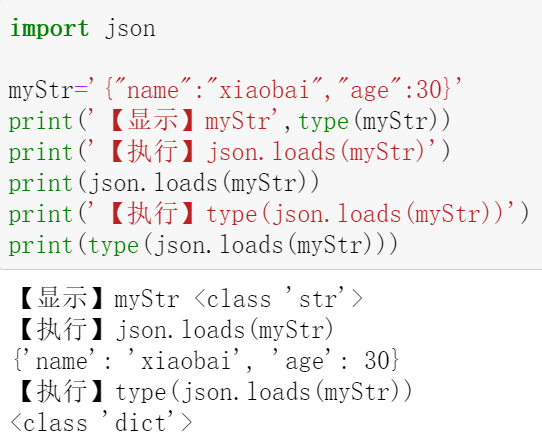
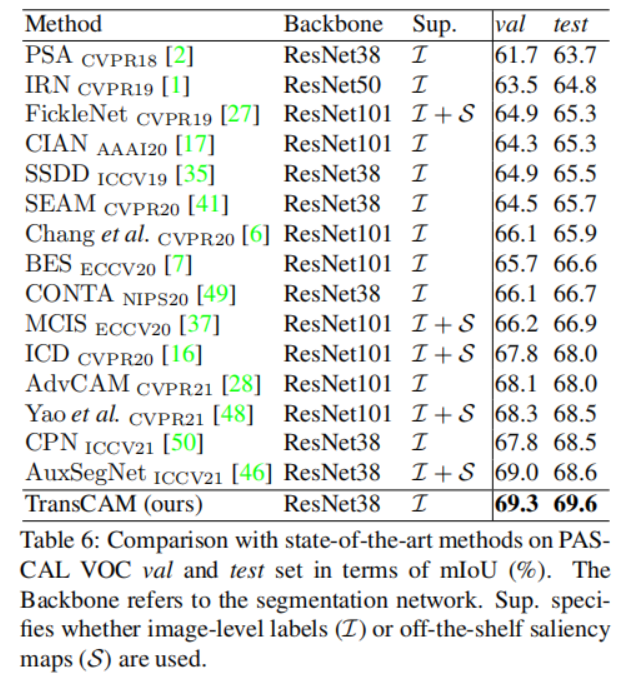
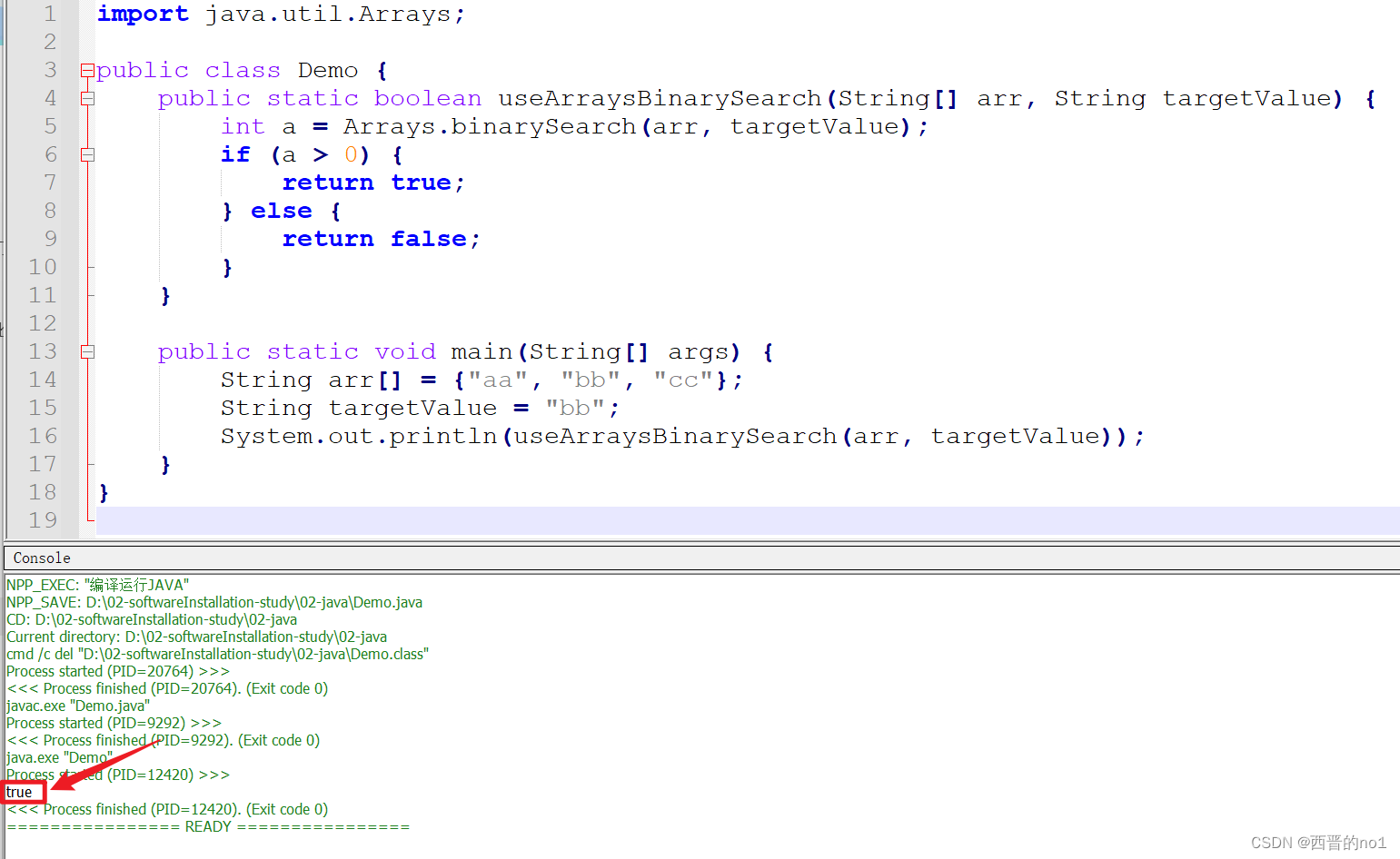
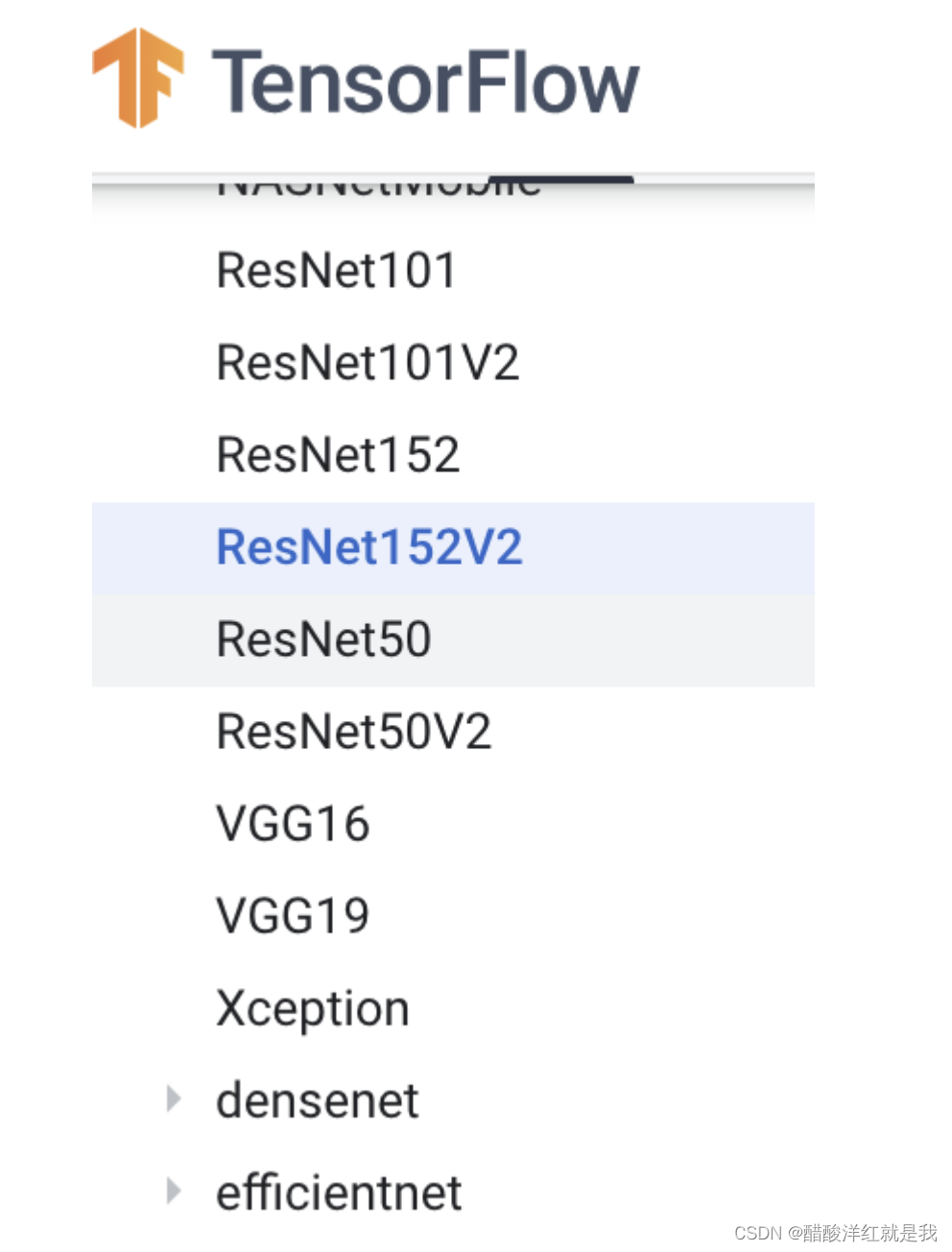


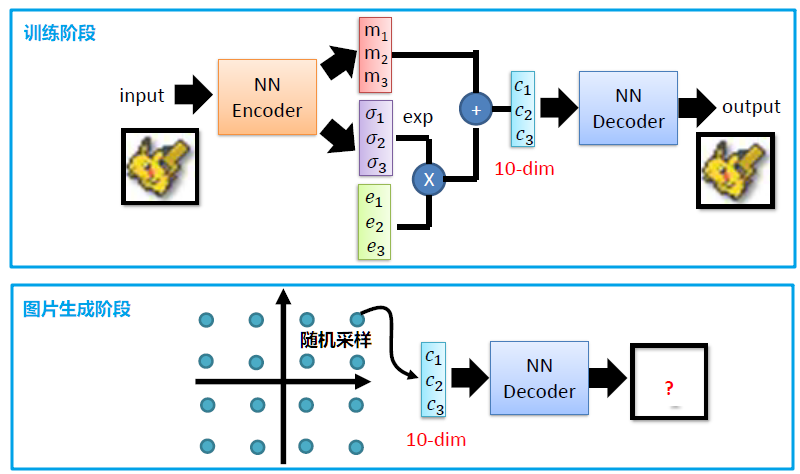
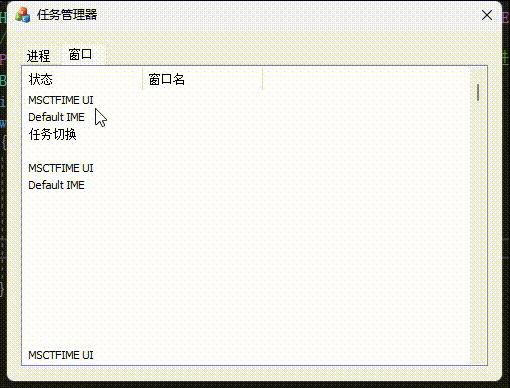


![[QT编程系列-4]:C++图形用户界面编程,QT框架快速入门培训 - 2- QT程序的运行框架:信号、槽函数、对象之间的通信](https://img-blog.csdnimg.cn/593120b7676a468d9a242ba0fd4f4584.png)

